Scout woodworking projects offer a unique blend of hands-on learning, skill development, and personal growth. From simple beginner projects to more advanced challenges, woodworking empowers Scouts to create, problem-solve, and build confidence. Through this journey, they gain practical skills, learn valuable life lessons, and contribute to their community.
This guide delves into the world of Scout woodworking, covering everything from beginner-friendly projects and essential woodworking skills to inspiring examples and resources to help Scouts excel in their woodworking endeavors. Whether you’re a seasoned woodworker or just starting out, there’s something here for everyone.
The Allure of Scout Woodworking Projects
Woodworking projects are a captivating and rewarding activity for Scouts of all ages. The process of transforming raw materials into functional and beautiful objects offers a unique blend of hands-on learning, skill development, and personal growth.
Benefits of Woodworking for Scouts
Woodworking provides numerous benefits for Scouts, fostering essential life skills and promoting personal development. These projects encourage problem-solving, creativity, teamwork, and patience, all of which are valuable assets in life.
- Problem-solving: Woodworking projects often involve intricate steps and require Scouts to think critically and creatively to overcome challenges. They learn to analyze problems, devise solutions, and adapt their approach as needed.
- Creativity: Woodworking allows Scouts to express their creativity by designing and crafting unique projects. They can experiment with different materials, techniques, and styles, developing their artistic vision and personal style.
- Teamwork: Many woodworking projects are best tackled collaboratively, requiring Scouts to work together, communicate effectively, and share responsibilities. This fosters teamwork and collaboration, essential skills for success in any endeavor.
- Patience: Woodworking projects often require time and dedication. Scouts learn the importance of patience, perseverance, and the satisfaction of seeing a project through to completion.
Alignment with Scout Values
Woodworking projects align seamlessly with the core values and principles of Scouting, promoting personal growth and contributing to the community.
- Duty to God: Scouts can use their woodworking skills to create religious artifacts or donate their projects to places of worship, demonstrating their faith and commitment to service.
- Duty to Country: Woodworking projects can involve creating patriotic items like flags, furniture for community centers, or even building structures for outdoor activities, fostering a sense of civic responsibility.
- Duty to Others: Scouts can use their woodworking skills to create items for those in need, such as toys for children’s hospitals, furniture for shelters, or even tools for local organizations.
Beginner-Friendly Scout Woodworking Projects
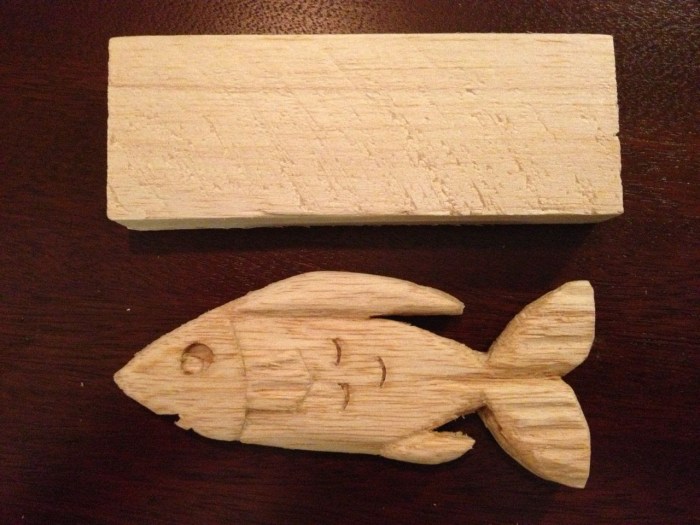
Woodworking is a great skill for Scouts to learn. It teaches patience, problem-solving, and creativity, and it can be a rewarding hobby. These beginner-friendly projects are perfect for Scouts of all ages and skill levels.
Simple Woodworking Projects for Beginners
Here are some simple woodworking projects that are perfect for beginners. These projects are easy to follow and require minimal tools and materials.
Simple Projects for Younger Scouts
- Birdhouse: This is a classic beginner project that is easy to make and can be customized with different designs and colors. Use pre-cut wood for the birdhouse to make the project easier.
- Wooden Toy: This project can be as simple as a wooden block or as complex as a small car. Choose a simple design and use basic woodworking tools.
- Picture Frame: This project is a great way to showcase a Scout’s artwork or photos. Use pre-cut wood or simple joinery techniques to assemble the frame.
Projects for Older Scouts
- Simple Shelf: This project is a great way to learn about basic woodworking techniques, such as cutting wood and attaching pieces together. Choose a simple design and use basic woodworking tools.
- Wooden Sign: This project is a great way to personalize a Scout’s room or campsite. Use pre-cut wood or simple joinery techniques to assemble the sign.
- Small Stool: This project is a great way to learn about more advanced woodworking techniques, such as cutting angles and using a drill press.
Safety Precautions for Scout Woodworking Projects
Safety is paramount when working with wood. Here are some important safety precautions to follow:
- Always wear safety glasses to protect your eyes from flying debris.
- Use sharp tools and always cut away from your body.
- Keep your work area clean and free of clutter.
- Never use power tools without proper supervision and training.
Advanced Scout Woodworking Projects
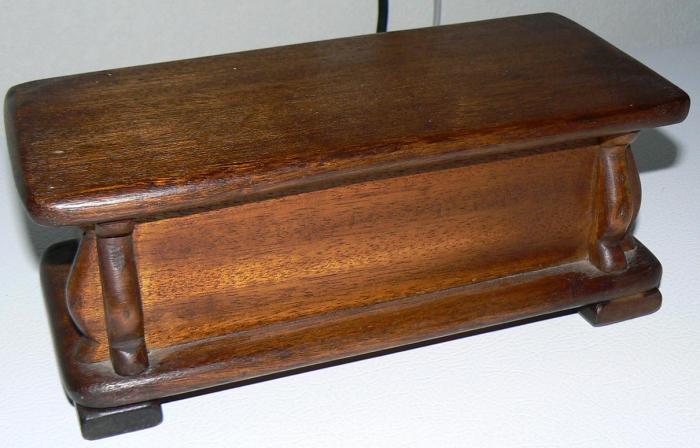
Scouts who have mastered the basics of woodworking and are eager to take on more challenging projects will find a wealth of possibilities in the realm of advanced woodworking. These projects often involve intricate joinery, complex shapes, and decorative elements that require a higher level of skill and precision.
Advanced Joinery Techniques
Advanced joinery techniques are essential for building sturdy and aesthetically pleasing furniture and structures. These techniques allow for strong and durable connections between wood pieces, ensuring that the finished product is both functional and beautiful.
- Mortise and Tenon Joints: These joints are incredibly strong and are commonly used in furniture making. A mortise is a rectangular hole cut into one piece of wood, while a tenon is a protruding projection on the other piece of wood that fits into the mortise. The two pieces are then glued together, creating a strong and secure connection. Mortise and tenon joints can be further strengthened by using a wedge to tighten the tenon in the mortise.
- Dovetail Joints: Dovetail joints are a type of interlocking joint that is both strong and decorative. They are often used in drawers and other box-like structures. The dovetail joint is formed by cutting a series of interlocking pins and tails into the two pieces of wood. The pins are cut into the end of one piece of wood, while the tails are cut into the other. The pins and tails are then interlocked, creating a very strong joint.
- Box Joints: Box joints are a type of butt joint that is strengthened by adding a series of interlocking fingers or grooves. This creates a very strong and aesthetically pleasing joint. Box joints are commonly used in boxes, drawers, and other woodworking projects where a strong and clean-looking joint is required.
Complex Shapes and Curves
Advanced woodworking projects often involve creating complex shapes and curves, which require specialized tools and techniques. These projects can range from furniture with intricate designs to decorative items like turned bowls or carved sculptures.
- Using a Band Saw: Band saws are essential for cutting complex curves and shapes. They are versatile tools that can be used to cut wood, metal, and plastic. Band saws use a continuous blade that runs around two wheels. The blade is tensioned to prevent it from breaking. Band saws are used to cut curves, intricate designs, and even create decorative elements.
- Using a Router: Routers are power tools that are used to shape and carve wood. They use a rotating bit to cut away wood, creating a variety of shapes and designs. Routers can be used to create decorative edges, moldings, and even intricate carvings. Routers are also used to create grooves and dadoes, which are useful for joining wood pieces.
- Using a Lathe: Lathes are used to turn wood into round shapes, such as bowls, vases, and spindles. The wood is mounted on a rotating spindle, and a cutting tool is used to shape the wood as it spins. Lathes are a specialized tool that requires practice and skill to master.
Decorative Elements and Finishes
Advanced woodworking projects often incorporate decorative elements and finishes that add beauty and value to the finished product. These elements can include inlays, carvings, and various types of finishes.
- Inlays: Inlays are decorative elements that are inserted into the surface of wood. These elements can be made of different types of wood, metal, or other materials. Inlays are often used to create intricate designs or to highlight specific areas of a piece of furniture.
- Carvings: Carving is a technique used to create decorative elements on wood. Carvings can be simple or elaborate, and they can be used to add texture, detail, and beauty to a piece of furniture.
- Finishes: Finishes are used to protect and enhance the appearance of wood. They can range from simple oil finishes to more complex lacquers and stains. The type of finish used will depend on the desired effect and the type of wood being used.
Examples of Advanced Scout Woodworking Projects
Advanced Scout woodworking projects showcase the skills and creativity of Scouts who have mastered the basics of woodworking. These projects often involve complex joinery, intricate designs, and decorative elements.
- A Queen Anne Style Desk: This project requires the use of dovetail joints, mortise and tenon joints, and other advanced joinery techniques. The desk also features intricate carvings and decorative elements, such as a curved top and a serpentine front.
- A Grandfather Clock: This project requires a high level of skill and precision, as it involves creating a complex mechanism and a beautiful wooden case. The clock will also require the use of a variety of joinery techniques and decorative elements.
- A Wooden Boat: This project requires the use of a variety of woodworking techniques, including planking, framing, and finishing. It is a challenging project that requires a high level of skill and patience.
Essential Woodworking Skills for Scouts
Woodworking is a valuable skill for Scouts, fostering creativity, problem-solving, and practical skills. By mastering basic woodworking techniques, Scouts can create useful and lasting projects, contributing to their personal growth and community service efforts.
Essential Woodworking Tools and Equipment
Having the right tools is crucial for safe and efficient woodworking. Here is a list of essential tools and equipment every Scout should familiarize themselves with:
- Hand Saw: Used for cutting wood to size. It is important to use a saw with a sharp blade and to keep your fingers away from the blade.
- Measuring Tape: Used for accurately measuring wood before cutting.
- Hammer: Used for driving nails and securing wood pieces together. When hammering, always wear safety glasses and make sure the nail head is fully seated.
- Screwdriver: Used for driving screws into wood.
- Wood Chisel: Used for shaping and carving wood.
- Safety Glasses: Protect your eyes from flying debris when working with wood.
- Work Gloves: Protect your hands from splinters and injuries.
- Clamps: Used to hold wood pieces together while working.
- Sandpaper: Used to smooth out rough surfaces and create a finished look.
- Wood Glue: Used to bond wood pieces together.
Measuring and Cutting Wood
Accurate measuring and cutting are fundamental to woodworking. Here’s how to master these skills:
- Measuring: Always measure twice and cut once! Use a measuring tape to accurately determine the length and width of the wood piece you need to cut.
- Marking: Use a pencil to mark the cutting line on the wood.
- Cutting: When using a hand saw, hold the saw at a 45-degree angle to the wood and make smooth, even strokes.
- Safety: Always use a sawhorse or workbench to support the wood while cutting. Keep your fingers away from the saw blade, and wear safety glasses.
Sanding Wood
Sanding is essential for creating a smooth, finished surface on your woodworking projects.
- Sanding: Start with a coarse-grit sandpaper and gradually work your way up to a finer grit. This will remove any rough edges and create a smooth finish.
- Sanding Direction: Sand in the direction of the wood grain for a smoother finish.
- Safety: Wear a dust mask to protect your lungs from sawdust.
Finishing Wood
Finishing wood protects it from damage and enhances its appearance.
- Finishing: Common wood finishes include paint, stain, and varnish.
- Application: Apply finishes evenly and let them dry completely before handling the wood.
- Safety: Use finishes in a well-ventilated area and wear a respirator to protect your lungs.
Incorporating Woodworking into Scout Activities
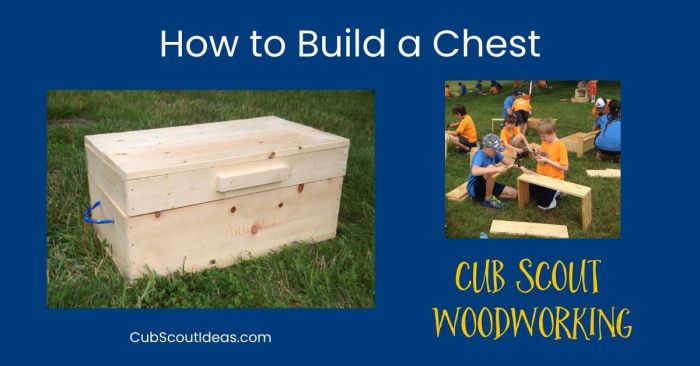
Woodworking can seamlessly blend into a variety of Scout activities, providing a unique blend of practical skills, creative expression, and teamwork opportunities. From building useful items for the troop to completing merit badge requirements, woodworking offers a valuable and engaging addition to the Scouting experience.
Integrating Woodworking into Existing Scout Activities
Woodworking projects can be easily integrated into existing Scout activities, adding a hands-on element and fostering a sense of accomplishment. Here are a few ways to incorporate woodworking into campouts, community service, and merit badge requirements:
- Campouts: Camp furniture like benches, tables, and fire rings can be built during a weekend campout, providing practical use for the troop. A project like a simple birdhouse can be a fun activity for younger Scouts, while a more complex project, like a tool chest, can be a rewarding challenge for older Scouts.
- Community Service: Woodworking skills can be used to create donation items for local organizations. Building birdhouses for a wildlife sanctuary, wooden toys for a children’s hospital, or planters for a community garden are all meaningful ways to give back.
- Merit Badge Requirements: Woodworking projects can fulfill requirements for various merit badges, such as Wood Carving, First Aid, and Camping. For example, building a first aid kit box can be a practical project for the First Aid merit badge, while a simple wooden toolbox can be a useful project for the Camping merit badge.
Practical Woodworking Projects for Scout Troops
Woodworking projects can be tailored to the specific needs of the troop, providing practical tools and furnishings. Here are some ideas for woodworking projects that can be used for practical purposes within the troop:
- Camp Furniture: Building sturdy camp furniture, like benches, tables, and fire rings, can enhance the comfort and functionality of campouts. These projects can be completed as a group, fostering teamwork and collaboration.
- Birdhouses: Constructing birdhouses can provide a habitat for local birds, promoting environmental awareness and contributing to the local ecosystem. These projects can be tailored to different bird species and can be a fun activity for younger Scouts.
- Donation Items: Woodworking skills can be used to create donation items for local organizations, such as shelters, hospitals, or schools. Projects like wooden toys, bookends, or storage boxes can bring joy and functionality to those in need.
Woodworking and Teamwork
Woodworking projects inherently involve teamwork and collaboration. Scouts can work together to plan, design, and build projects, learning valuable skills in communication, problem-solving, and leadership. This collaborative process fosters a sense of accomplishment and camaraderie among Scouts.
Resources and Inspiration for Scout Woodworking
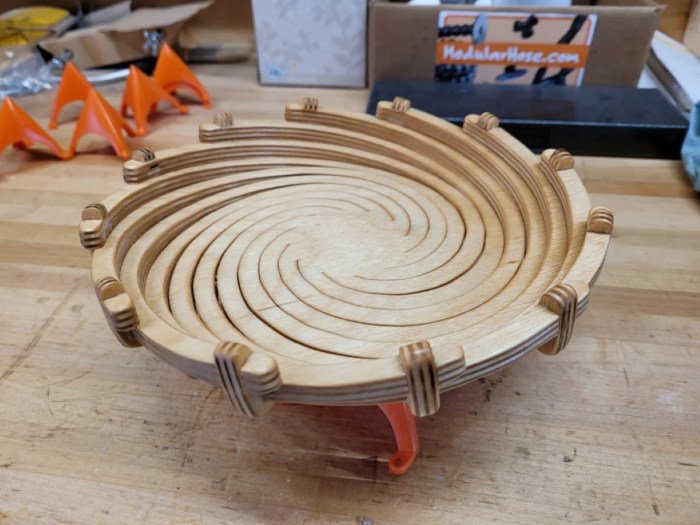
The world of woodworking offers a wealth of resources and inspiration to help Scouts develop their skills and creativity. From online tutorials and books to woodworking communities and real-life mentors, there’s a plethora of avenues to explore. Let’s delve into some of these valuable resources and get inspired by the woodworking achievements of Scouts around the world.
Online Tutorials and Books
Online tutorials and books provide a structured approach to learning woodworking skills. These resources offer step-by-step instructions, clear explanations, and visual aids, making it easier for Scouts to grasp new concepts and techniques.
- YouTube Channels: YouTube is a treasure trove of woodworking tutorials. Channels like “Woodworking for Mere Mortals,” “The Wood Whisperer,” and “Ana White” offer a wide range of beginner-friendly to advanced projects and techniques.
- Online Courses: Platforms like Udemy, Skillshare, and Coursera provide comprehensive woodworking courses taught by experienced instructors. These courses cover various aspects of woodworking, from basic tools and techniques to advanced joinery and furniture making.
- Woodworking Books: There are numerous woodworking books available that cater to different skill levels. Popular options include “The Complete Illustrated Guide to Woodworking” by Bruce Hoadley, “The Woodworker’s Guide to Finishing” by Bob Flexner, and “The Complete Book of Woodworking” by David Thiel.
Woodworking Communities
Connecting with other woodworkers can be incredibly beneficial for Scouts. Woodworking communities offer a platform to share projects, ask questions, get feedback, and learn from experienced woodworkers.
- Online Forums: Websites like Lumberjocks, Woodworking Talk, and Reddit’s r/woodworking provide a space for woodworkers to connect and discuss various topics. Scouts can ask questions, share their projects, and get advice from a community of passionate woodworkers.
- Local Woodworking Clubs: Many communities have woodworking clubs that offer workshops, demonstrations, and social gatherings. These clubs provide a great opportunity for Scouts to interact with experienced woodworkers, learn new skills, and participate in group projects.
Inspirational Woodworking Projects by Scouts
Scouts have created countless woodworking projects that demonstrate their ingenuity and skill. These projects showcase the diverse range of woodworking possibilities, from simple birdhouses to intricate furniture pieces.
- Birdhouses: Scouts often start with simple projects like birdhouses, which allow them to practice basic woodworking techniques and design principles.
- Wooden Toys: Wooden toys, such as toy cars, puzzles, and building blocks, are popular woodworking projects that encourage creativity and provide opportunities for Scouts to hone their skills.
- Furniture: As Scouts gain experience, they can tackle more complex projects like building simple furniture pieces, such as chairs, tables, and shelves.
Finding Woodworking Mentors, Scout woodworking projects
Having a mentor can significantly accelerate a Scout’s woodworking journey. Mentors can provide guidance, support, and hands-on instruction, helping Scouts develop their skills and confidence.
- Family Members and Friends: Start by looking for woodworking enthusiasts among family members and friends. They might be willing to share their knowledge and skills with Scouts.
- Local Woodworking Clubs: Many woodworking clubs have members who are willing to mentor young woodworkers. Contact local clubs and inquire about mentorship opportunities.
- Community Centers and Schools: Some community centers and schools offer woodworking classes or programs where Scouts can connect with experienced instructors.
Final Thoughts: Scout Woodworking Projects
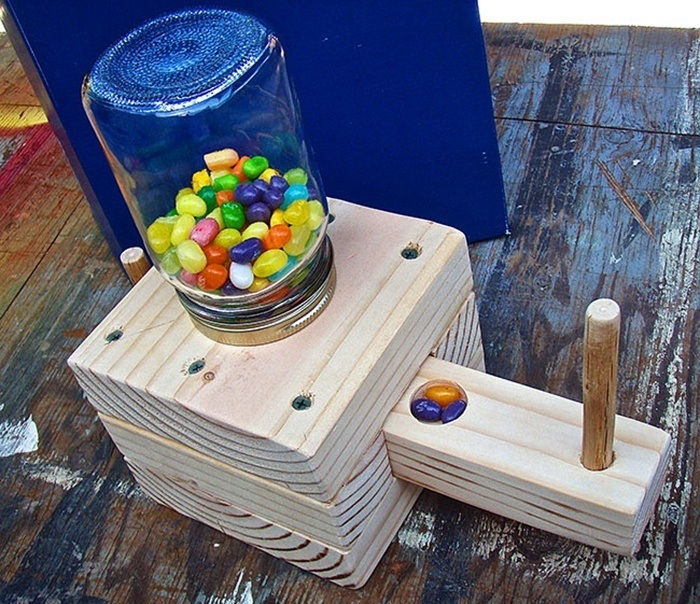
Woodworking is a rewarding activity that can be enjoyed by Scouts of all ages and skill levels. It fosters creativity, problem-solving, and a sense of accomplishment, while also providing opportunities for teamwork and community service. By embracing woodworking, Scouts can develop valuable skills, build lasting memories, and leave a positive impact on the world around them.
Question & Answer Hub
What are some common woodworking tools for Scouts?
Common tools include hand saws, measuring tapes, hammers, screwdrivers, clamps, sandpaper, and safety goggles.
What are some basic woodworking techniques Scouts should learn?
Essential techniques include measuring, cutting, sanding, finishing, and joining wood pieces.
How can I find woodworking resources for Scouts?
Online tutorials, woodworking books, local woodworking clubs, and experienced mentors are excellent resources.
What are some examples of Scout woodworking projects for community service?
Scouts can build birdhouses, benches, or donation items for local organizations.
Scout woodworking projects are a great way to learn new skills and build something useful. If you’re looking for some inspiration, check out these easy woodworking project plans. You can find plans for everything from simple birdhouses to more complex furniture.
Once you’ve mastered a few basic techniques, you’ll be able to tackle any scout woodworking project with confidence!
